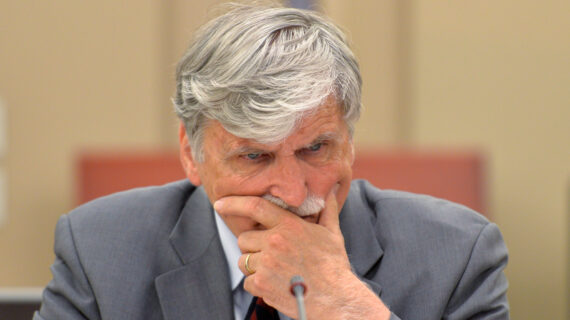Global warming is both real and worrisome and needs dramatic action to prevent serious harm to our quality of life. Progressive increases in average temperatures are being linked to the ongoing risks of melting polar ice caps, coastal flooding, drought in agricultural lands, famine, wildfires, and political upheaval.
Mark Hyman, an alternative medicine cardiologist at the Cleveland Clinic, also recently emphasized how climate change affects our future health by increasing our risk of chronic and infectious diseases and challenges our food supply and our mental health. He is a great proponent of regenerative farming, informing us that climate change also threatens the microbiome of the soil which then threatens the important microbiome of our human gut that is essential to our health.
While most people no longer deny the existence of global warming and the dramatic effects of climate change, there is limited consensus or political will to adequately halt the ongoing and increasing threat that it poses.
What causes global warming?
Trapping of heat-generating greenhouse gases in the atmosphere, primarily carbon dioxide, has resulted in an increase in world temperature of about one degree Centigrade over the past century, much of it more recently. While this may not seem a lot, the projected continuing temperature increases if not unchecked, will have ever-worsening global consequences.
Global warming has many causes, the greatest being the burning of fossil fuels. It also is caused by deforestation with a reduction in carbon dioxide trapping by trees, use of nitrogen-based fertilizers, and methane release from livestock raised for food.
Trends in worldwide fossil fuel use
The following graphs from Our World in Data1Energy: Key Charts https://ourworldindata.org/energy-key-charts demonstrate the challenges we face in easily halting global warming. As the world becomes more industrialized with migration to urban areas, there has been a relentless increase in the need for energy consumption and food production. Fossil fuels account for over 70 percent of energy production. Below is shown the worldwide rise in fossil fuel consumption by fuel type: oil, natural gas, and coal.
Fossil fuel consumption by country
Canada, surprisingly, has one of the world’s highest per capita rates of consumption of fossil fuels, even exceeding that of the U.S. and about triple that of Europe and the U.K. However, given our relatively low population size, other countries with large populations are key to reducing overall global consumption, especially the U.S., China, and India.
Coal is the worst fuel to burn and its use is highest in China and India. Interestingly, Australia has the highest per capita use of coal, about 15 times higher than the U.S. and eight times that of China.
As oil prices have risen dramatically due to the war in Ukraine, the unintended consequence is a recent increase in the use of cheaper coal in countries where it is more readily available.
Alternatives to fossil fuel use
The world will consume more energy each year as populations grow and become more affluent. There is a race to try and reduce the carbon footprint of this rise in consumption by the ever-increasing use of low carbon fuels. The graph below shows that progress is being made in reducing fossil fuel consumption and increasing the use of solar, hydro, wind, and geothermal alternatives. However, we aren’t close yet to adequately meeting real, not politically expedient, targets.
What more can we do?
There is a belief that we can successfully reduce worldwide fossil fuel and coal consumption by carbon pricing and taxation. The recent huge increase in oil and gas prices due to constraining Russian exportation has only resulted in a small reduction in consumption and a switch to lower-cost coal causing more, not less, pollution. We need to accept that while a reduction in fossil fuel consumption is highly desirable, it will not occur as quickly as we would like. We need to accept that Canada should have pipelines and LNG terminals that allow the export of stable supplies from a democratic country.2The unjust transition: Canada’s energy sacrifice is hurting the world, not helping it https://thehub.ca/2022-05-26/the-unjust-transition-canadas-energy-sacrifice-is-hurting-the-world-not-helping-it/ No one should be dependent on autocracies that want to harm democracies.
We need to make huge investments in alternative energy sources since they require high levels of initial capital expenditure to make a significant impact. This requires partnerships with industry, government, and technology innovators to develop lower-cost solutions affordable to the developing world.
There has been a reduction in the use of nuclear power despite large reserves of uranium. This is not surprising given the capital costs of development, high reactor maintenance costs, and the risk of accidental radiation leaks. Small modular reactors (SMRs) are a novel opportunity for a made in Canada solution for safer, less expensive, and more reliable nuclear energy for the world.3“Canada’s Small Modular Reactor (SMR) Action Plan is Canada’s plan for the development, demonstration and deployment of SMRs for multiple applications at home and abroad. SMRs are a promising new technology that could unlock a range of benefits: economic, geopolitical, social, and environmental. Canada’s SMR Action Plan brings together essential enabling partners, leveraging their strengths to lock-in these benefits and lead the world on SMRs. The Action Plan is the result of a pan-Canadian effort bringing together key enablers from across Canada, which we call ‘Team Canada’ – the federal government, provinces and territories, Indigenous Peoples and communities, power utilities, industry, innovators, laboratories, academia, and civil society.” https://smractionplan.ca/ We have seen a contraction in the use of nuclear energy and yet it remains an important, available, and affordable option.
Transportation accounts for about 20 percent of global emissions. Electric vehicles are making major inroads in the automotive market but are constrained by the availability of rare earth minerals needed for their production. We need to increase such mineral extraction outside of China and invest in chip production facilities that are essential to innovation and manufacture.
Hydrogen-powered fuel cells show great promise but are not yet ready for major commercial use related to cost and infrastructure. They may be a key to future affordable and abundant green energy. President Biden recently announced a $10 billion investment to support hydrogen power research and infrastructure. Globally there has been $80 billion in investment in this technology. The challenge is that hydrogen fuel production needs to come from other energy sources with a colour palette of carbon production from green to brown depending on whether the energy required to make it comes from low carbon to high carbon coal sources. Currently, 95 percent of hydrogen is gray hydrogen, since it is the cheapest and comes from using steam to react with methane at high temperatures yielding hydrogen, carbon monoxide, and carbon dioxide—thus retaining a significant carbon footprint.
Solar power is increasingly being used, especially in China and the U.S. We can’t allow China to dominate the market by the unfair subsidization of production in order to take over world supply. Current supply chain shortages have taught us about that risk.
We need even more innovative solutions to reduce the carbon footprint of the fuels we will continue to need to use in the next few decades. Direct air capture with the removal of carbon dioxide is a viable solution for hard to de-carbonize emissions into the air from aerospace, maritime, rail, and trucking industries. The captured CO2 is bound to potassium hydroxide, trapping them in a liquid solution. It is then concentrated, purified, and can be stored underground or used to make new products such as cement or plastics. Alberta has already made a strong push to expand this technology.4“Alberta has committed $1.24 billion through 2025 to two commercial-scale carbon capture and storage projects. Both projects will help reduce the CO2 emissions from the oil sands and fertilizer sectors and reduce GHG emissions by 2.76 million tonnes each year. This is equivalent to the yearly emissions of 600,000 vehicles.” https://www.alberta.ca/carbon-capture-utilization-and-storage-overview.aspx#:~:text=safe%2C%20permanent%20storage.-,Alberta%20has%20committed%20%241.24%20billion%20through%202025%20to%20two%20commercial,2.76%20million%20tonnes%20each%20year. Coal scrubbers can also be used to reduce the emissions from coal-burning smokestacks.
We need concrete action
Currently, most countries support a reduction in emissions and the increased use of clean energy technology. Most agreed to targets are neither good enough nor free of political expediency. We can’t afford political virtue signalling that doesn’t meet real targets. While every country must do its part, the key is making clean energy both available and affordable to countries with large and growing populations that can’t afford expensive alternatives.
In summary, we in Canada can play a major role in reducing our own carbon footprint, but more importantly in providing innovative technology that will make clean energy affordable and available from a safe and reliable supplier.
We also have to accept that during the transition we need to support made in Canada exportation of high-quality oil and gas to safely supply world demand and constrain Russia. The world came together to oppose Russian aggression in Ukraine. We need to now come together to invest in innovation, help fund its use by those that need it most, and save our health and our planet for our children and grandchildren. It will not be easy but it is essential to the quality of the air we breathe, the food we eat, and the health we want.




